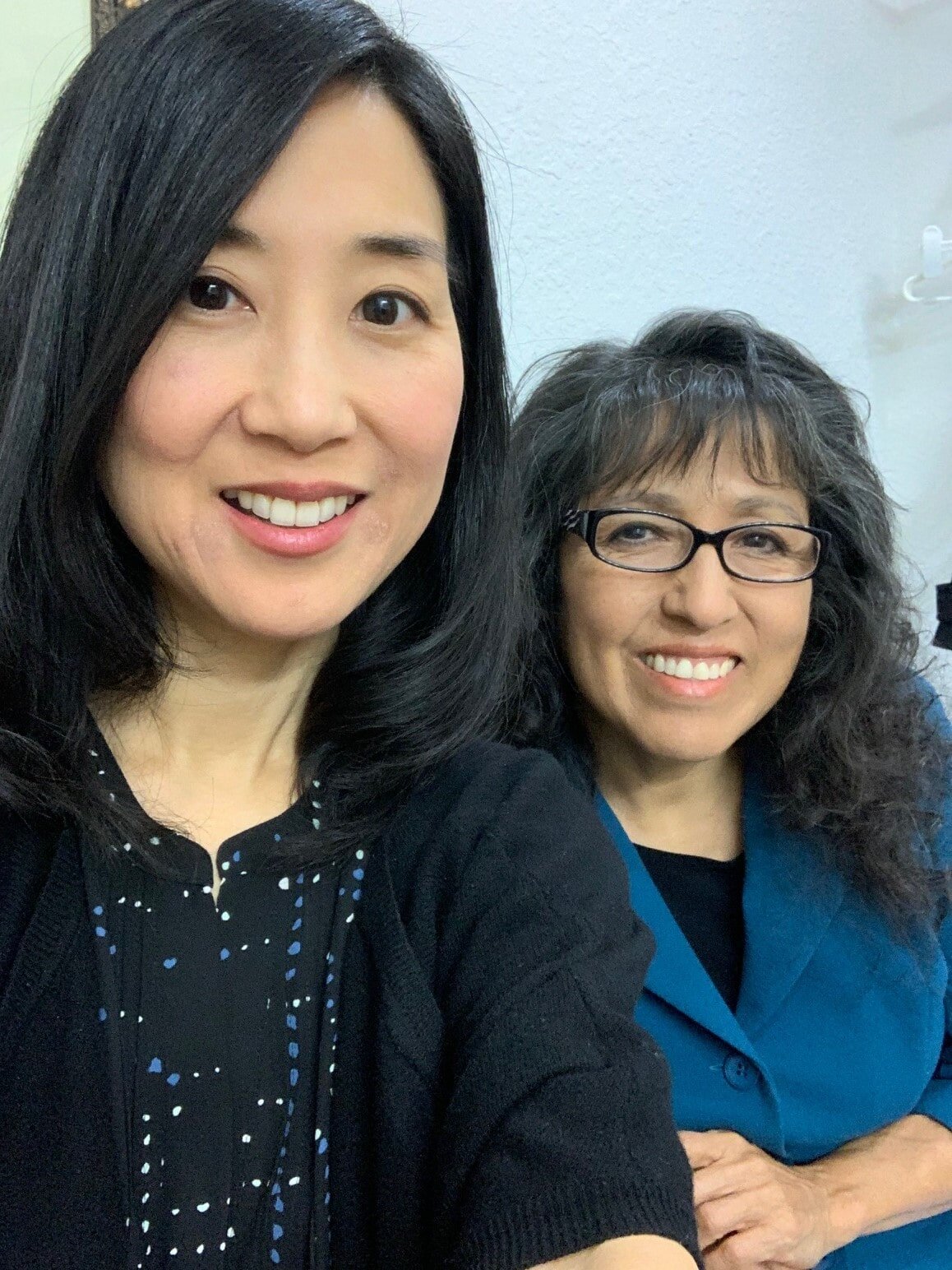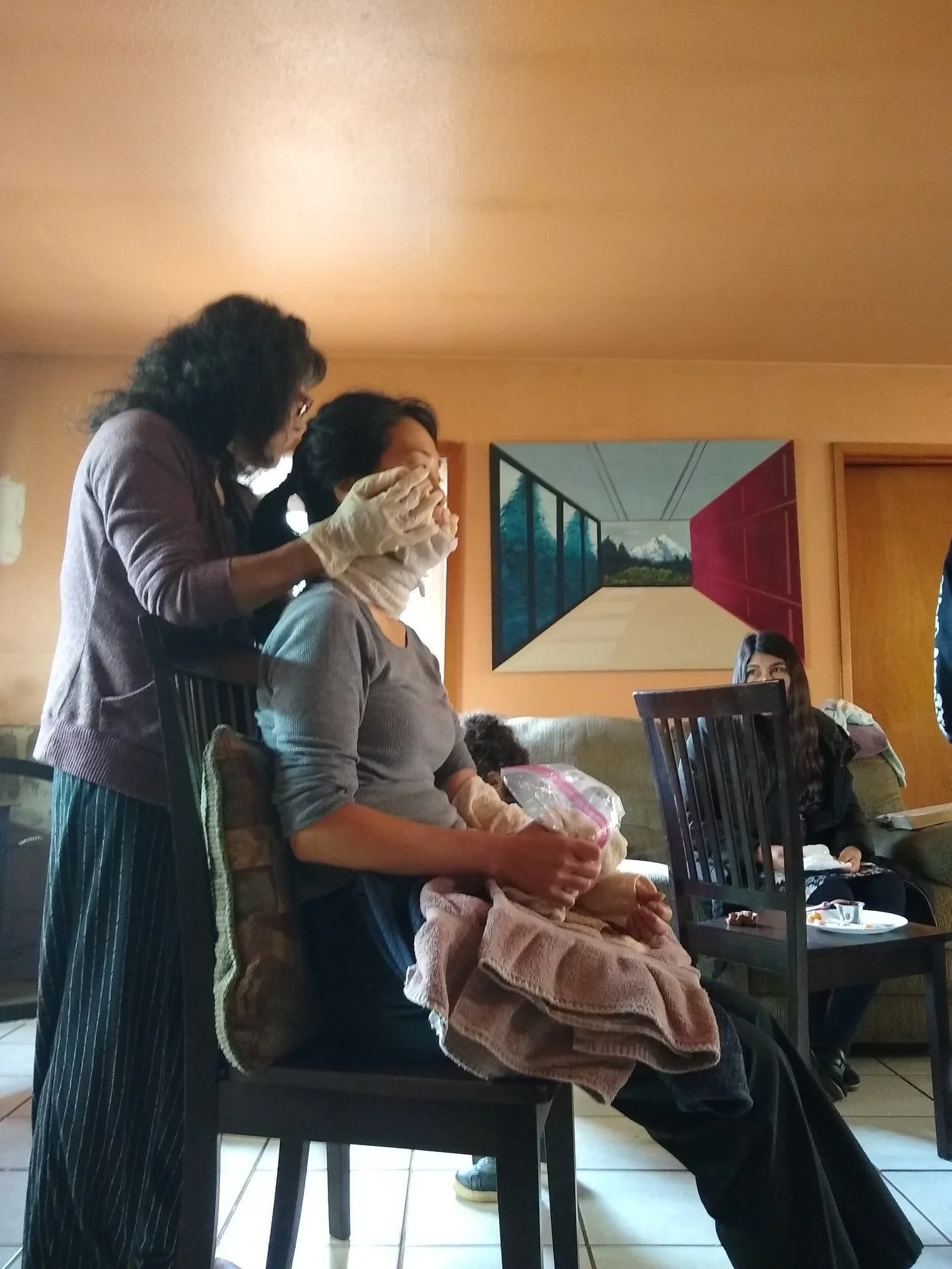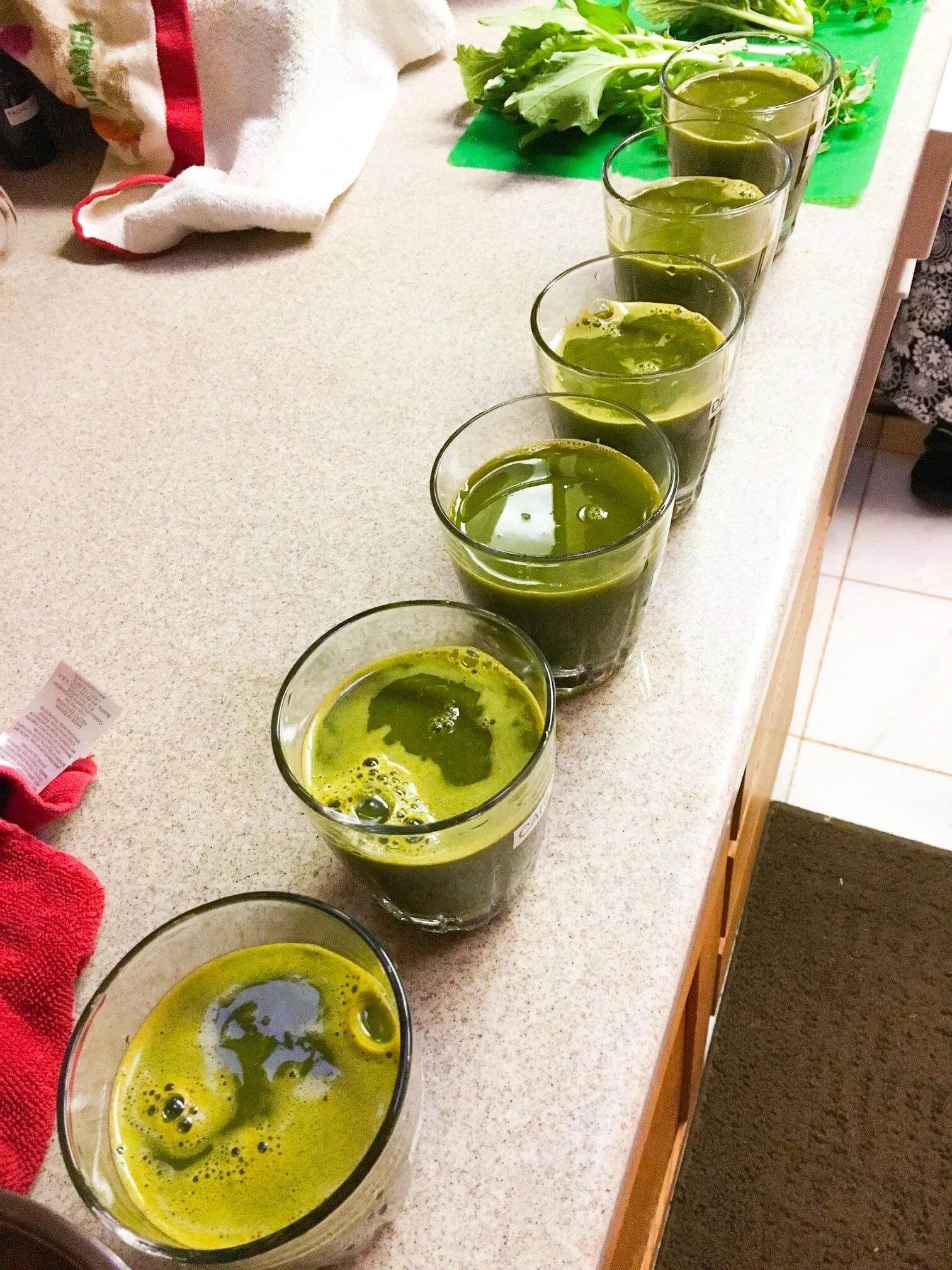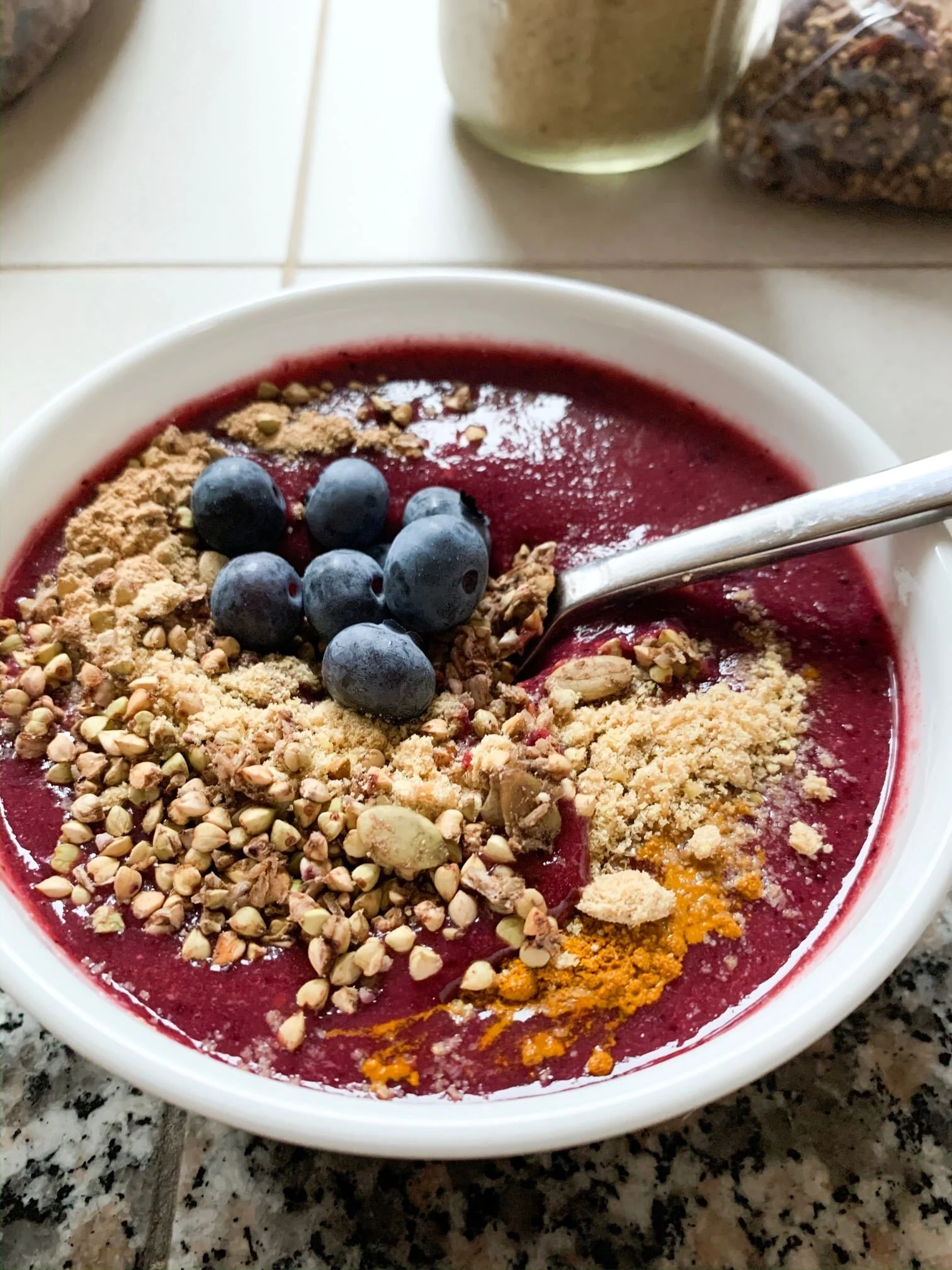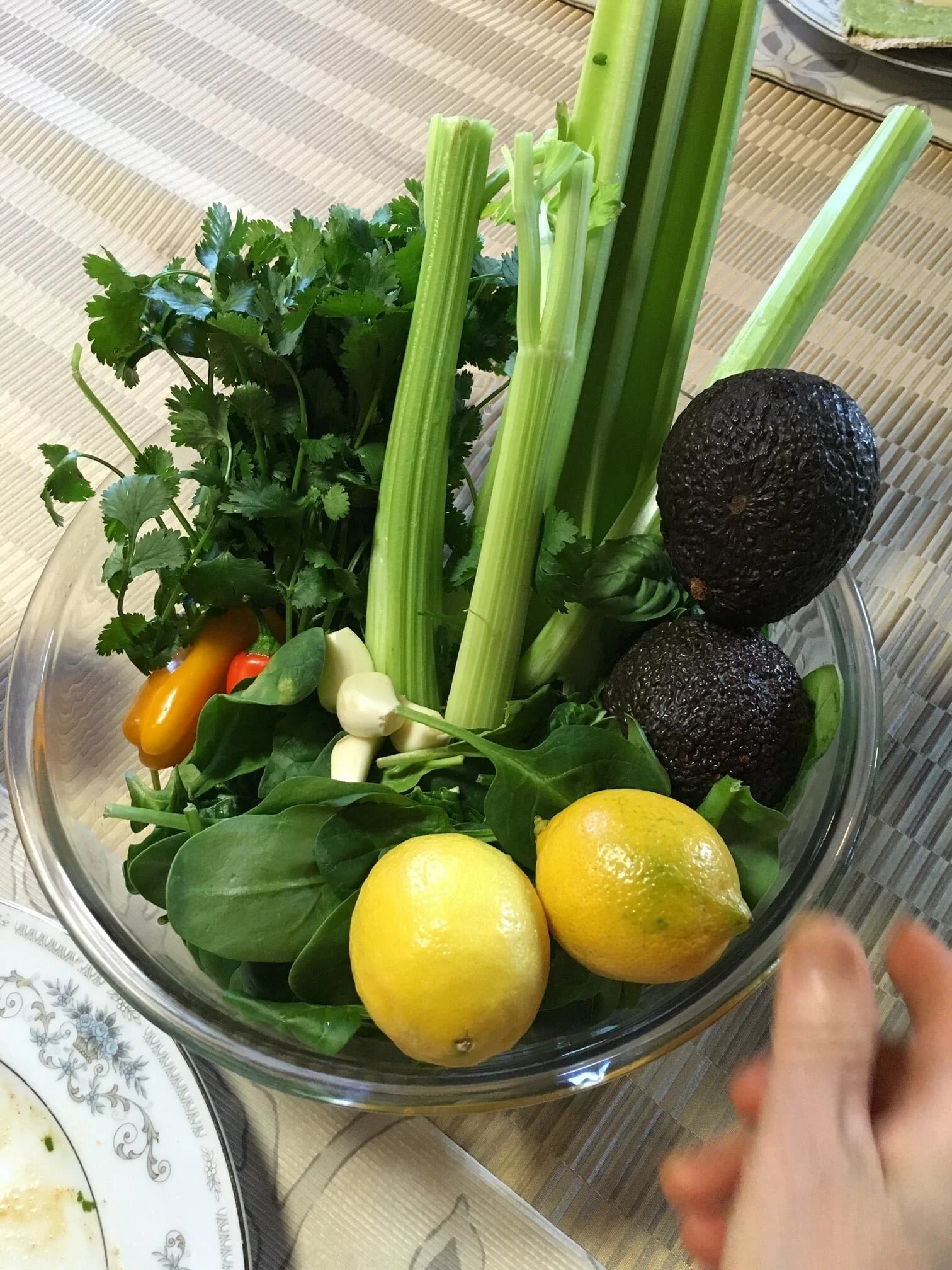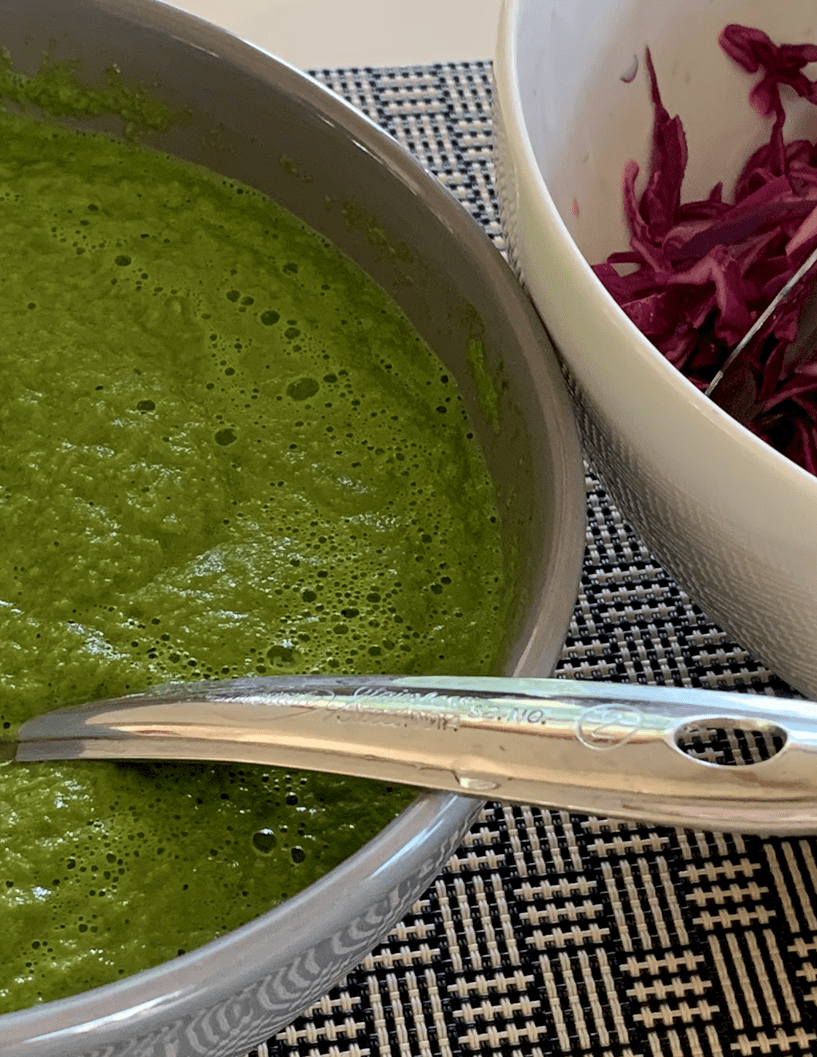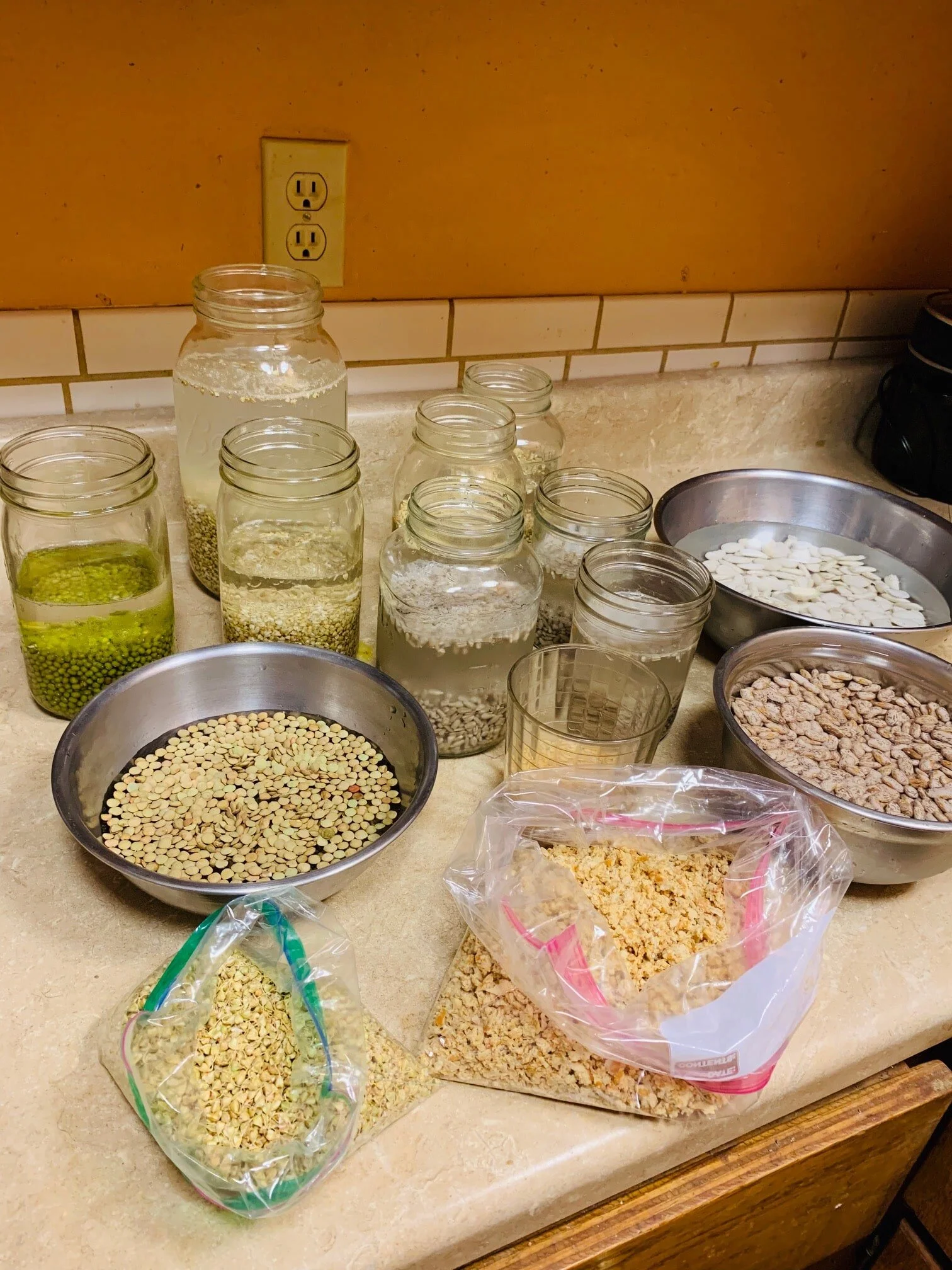Trusting in God When Life Falls Apart | Part 2, Principles for Recovering Health
Mercy and me in February waiting to be interviewed for the 3ABN program. I was thankfully able to cover up my skin problem then with LOTS of makeup!
I met Mercy in January of 2016, when I attended the Years Restored 10 day detox program. I had been diagnosed with leaky gut during a time when there was much more skepticism about food sensitivities and it was amazing to meet someone who was so successful in helping people with leaky gut through lifestyle and diet who had the same spiritual beliefs and goals as I did. I began calling Mercy just to get to know her better and we became fast friends and eventually partners.
Mercy not only has a love for research, she has a lot of energy and is very faithful to quickly put into practice whatever she learns is right and good to do. This faithfulness has paid off in the health of herself, her family, and her clients. It’s something that has inspired and encouraged my own health and spiritual journey.
When I got to Mercy’s home, it was a Friday evening and we were entering into the Sabbath hours, which we keep from sunset Friday to sunset Saturday. We sang a few songs that her young granddaughter enjoyed, shared something meaningful from the Bible, and prayed together. Mercy is an infusion nurse for autoimmune patients and had been at work all day, so I didn’t want her to do anything for me that evening, but she insisted we start treatment. She filled a metal mixing bowl with ice and water and began soaking towels and placing them over my neck and my face. We put them over my left arm that was still swollen, hard, and dusky in color. For the first time in weeks, I felt relief.
If you know my history, you know that I’ve been on powerful antibiotics in the past that (along with other things) contributed to significant health issues. Although I was conventionally trained in medicine, over the years, I have decided to avoid medications unless absolutely necessary. Working with Mercy has been something that has strengthened that decision, as I have seen serious medical problems resolve with the proper use of diet, lifestyle and natural remedies.
One of the biggest misconceptions that people have about eating for health is that there is a different diet for different health problems. While there are nuances that take each person’s uniqueness into consideration, whether you have had cancer, autoimmune disease, or an unusual problem like mine, the principles for recovery are the same.
A Few Principles for Recovering Health With Lifestyle
1) Simplify the Diet. Digestion takes much energy for the body. Even eating very nutritious food takes energy; it takes more when you compound that energy loss with the energy the body will have to expend when you eat inflammatory food.
When you have a severe health problem, every thing you do counts. Eat food that is highly nutritious, get rid of anything toxic like food with chemicals and things that make digestion more difficult, like pesticides, sugar, fats and preservatives. I was already on a very simple diet, but because I would flare immediately with or after eating, I had to further modify my diet due to this condition.
You can assume that your gut is affected, whenever there is inflammation in the body and you can assume you have inflammation running rampant whenever you have dysfunction and disability. To simplify the information, we have written out how to eat in our cookbook, The Autoimmune Plant Based Cookbook.
2) Consider Fasting. Your cells are at work looking for injured cells to repair and for pathogens that should not be around— especially when you rest. During a fast, the body is no long expending resources to digest and is able to focus energy now on healing. I did much better on the days I fasted and I always had to fast after a flare to help calm my system down.
3) All habits of lifestyle are important. During this time, I spent many hours outside in the sun and in the fresh air, I juiced, I stayed off the computer and phone, I kept relationships going with friends and family, and I continued to choose to trust in God. These are all principles of wholeness.
WHOLENESS is an acronym. Every letter stands for a law of health that needs to be in place for the human body to function properly.
W ater —proper hydration
H abits —of eating, sleeping, living.
O xygen —fresh air, sleep apnea, posture
L ove —relationship with God, self, others
E nvironment —chemicals/toxins in food, environment
N utrition —antiinflammatory healing foods
S leep—one of the most powerful remedies
S unlight —another underutilized remedy but so necessary and helpful!
4) Record your history. I tried to pay attention to how my symptoms were changing with my daily activities. I kept in mind when my symptoms began, what was happening when the symptoms started, and what made the symptoms better or worse. I would recommend keeping a journal of your symptoms and the activities of the day—including what you eat, drink, and medications you take.
Here are some natural remedies that we tried:
Topical/Local Natural Remedies for the Skin—What Worked and What Didn’t
Onion poultices. Onions are great for skin problems, including burns. There is a thin membrane that you can peel off the undersurface of one of the onion layers and this can be put on the problem area. I really didn’t think this would do anything for me and in this case, I was correct, because ANYTHING I put on the excoriated areas would burn and feel more painful. Verdict: Not helpful for my condition.
Charcoal poultices. Charcoal is extremely anti-inflammatory and I have used it to help with the pain of herniated discs, problem knees, and burns, but again, in this case, it was not helpful.
Lotions. People have asked what lotions I used. I used salves and other applications with Comfrey, Olive oil, Shea butter, Calendula, Aloe, Pine sap, lavender, and a host of other things. My condition did not respond to anything and seemed to get worse with everything.
Frozen onion broth. In addition to icing off the area, using frozen onion broth on the inflamed open skin seemed to be very soothing and healing. Verdict: Helpful short term.
Natural Remedies for the Immune System
Oregano oil inhalations. Some people think that oregano oil inhalations are only for respiratory infections, but I think that breathing steam with dilute oregano oil is a potent way to get oregano oil into the system and I found that it would calm my symptoms down.
Hydrotherapy. I could not tolerate heat well so I could not easily tolerate showers, let alone hot and cold showers. But we found that hot foot baths were helpful. Hot foot baths are what we call a “derivative” type of hydrotherapy; they work indirectly by drawing blood flow away from areas of congestion. Having your feet in hot water for 20 minutes causes the vessels of the feet to dilate and this draws blood from the head, chest, abdomen and pelvis. It is a good way to help with migraine headaches and menstrual cramps. I have used it for patients who have severe eye inflammation. You want to keep hot water nearby to keep the water in the bucket hot the entire time and you will rinse with ice cold water at the very end, before toweling off.
Here is a video of what one treatment session looked like. I’m having a hard time talking because the skin around my mouth is tightening up.
Medications
When I was at my parents, my mother had asked me to try her antihistamine to see if it would help. I really couldn’t see that it was doing anything, but thought perhaps it was taking the edge off, so I took a Claritin every day for a few weeks, until I was convinced that it was really not helping.
Nutrition
Juicing. I had already been juicing green juices at home, and we continued this practice at the Ballards. Our juice was 50% carrots and 50% greens like chard and lettuce. I then discovered that carrots were not agreeing with my condition and so the drinks became all green—Cucumber, celery and leafy greens. Not as yummy, but super helpful in that it seemed to help with inflammation.
Superfoods. I added turmeric, raw garlic, and onions to my meals daily. We would get herbs from the garden like rosemary, lavender, peppermint, and oregano and add them to the pesto. We cooked onion broth and I drank this broth every day as well.
Onion broth: 2 onions sliced in half, 4 garlic cloves, 3 cups of water. Boil and then simmer low for 15 minutes.
Teas. I found that teas to soothe the nerves were helpful. These included chamomile, lemonbalm, and catnip tea. Turmeric and ginger tea was also helpful in soothing the inflammation.
Plant Based low fat/protein meals. I’m totally plant based and I eat very simply already, but I noticed that I had to avoid certain foods that were higher in fat and protein foods with this problem. The first video I posted above was me the day after I ate a butter that was made purely out of pumpkin seeds. I was full, but craved something more and ate a couple tablespoons of the butter, and I could feel the inflammation begin right away. I also tried to avoid foods that were higher in histamines, but I was not always consistent with this.
Simple meals. I usually felt better in the morning upon wakening, but eating would cause my face to acutely get inflamed, especially when I ate foods that were higher in fat and protein. As time progressed, I began developing a habit of eating for breakfast a berry/apple smoothie blended with avocado for fat content, carob, and stevia. I would also have a hot pseudograin cereal, liked buckwheat, amaranth, or quinoa”. Foods that were high in fat and protein, like spreads made with seeds/nuts, would cause severe flares.
For lunch, I ate a green “pesto” which was greens blended with some cucumber, celery, garlic, and onion. I also had a cooked pseudograin with legumes like lentils or mung beans, which I found were better tolerated than other beans. Everything was blended so that the malocclusion would not be so much an issue and cause more inflammation.
Ingredients for Pesto:
I love food and I love eating. Mercy and the others were impressed that I could eat meal after meal as simply as I did, but I find simple food to be truly delicious. Also, I was just grateful that I had good nutritious food to eat and people to help me prepare it!
Supplements
Chlorella. I initially did find this to be helpful, but over time it also did not seem to work.
Serrapeptase. This is supposed to help with scar tissue and I took it intermittently. I can’t say that it was helpful or not.
Vitamin D. I initially took some high dose vitamin D and then just assumed I was getting enough vitamin D being out in the sunlight.
Boswellia. I would add to my fruit smoothie every day when at home.
Enzymes. I took enzymes every once in a while and the days I took them I do think I felt some better, but I just didn’t take consistently enough to know for sure.
Diagnosis and Treatment Recommended
I called a dermatologist friend of mine and sent him my photos. I had been researching my symptoms online and suspected perioral dermatitis and chronic urticaria. He agreed and recommended oral antibiotics (minocycline) and a topical steroid (triamcinolone) for the neck. With my history of gut permeability, I didn’t think my microbiome could take another hit and I needed to figure out the root cause before I decided on therapy.
Due to the timing of the lesions, I strongly felt that my problem was associated with my malocclusion, the splint and my injury. I also believed that the splint was somehow affecting my spine, but I couldn’t put it all together. Juicing, eating simply, and applying natural remedies was helping me survive until I could figure out what the root cause was and how to get better. It took me months to do that, but during that time, I made a discovery that allowed me to get a much better handle on my symptoms. I’ll share more about that in future blogs, but it explains the happy looks on our faces!

